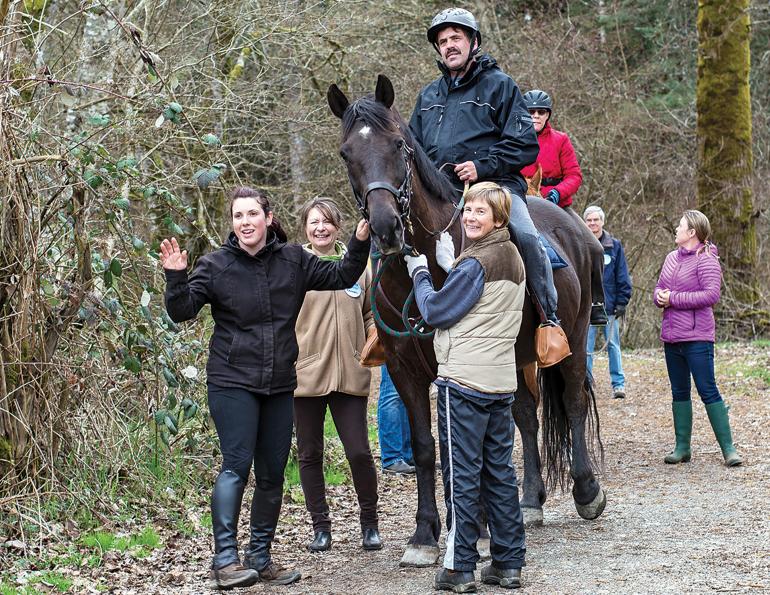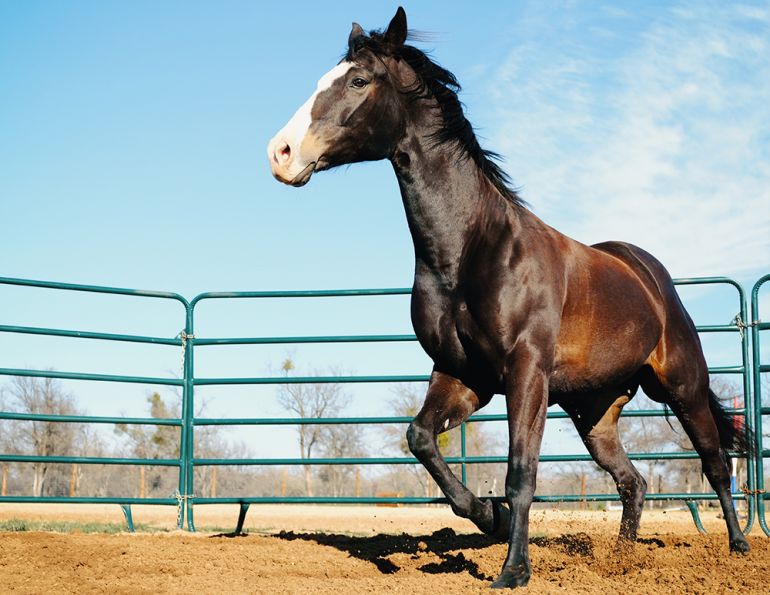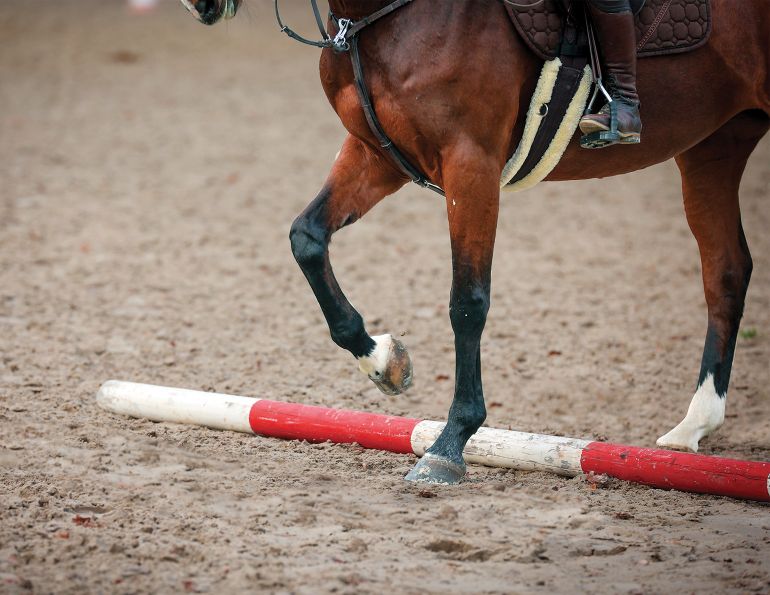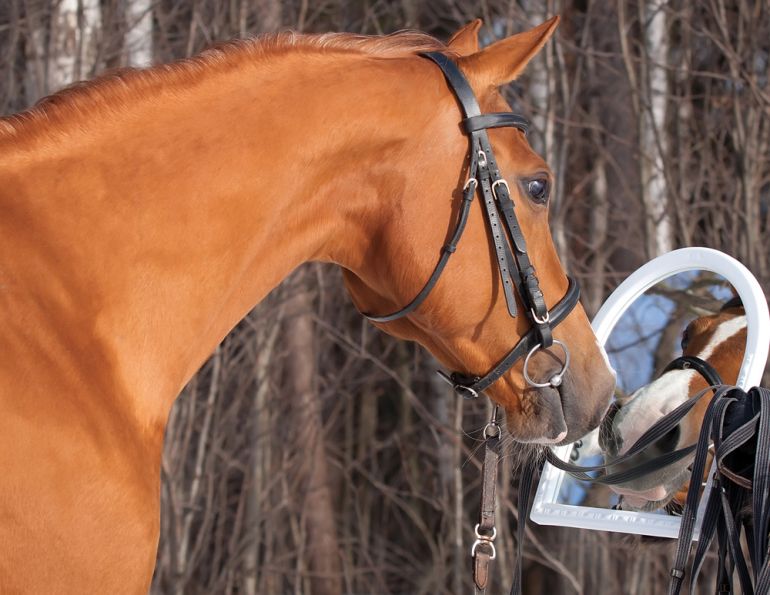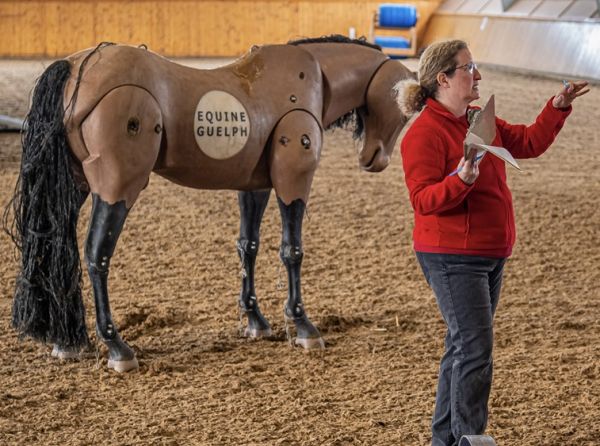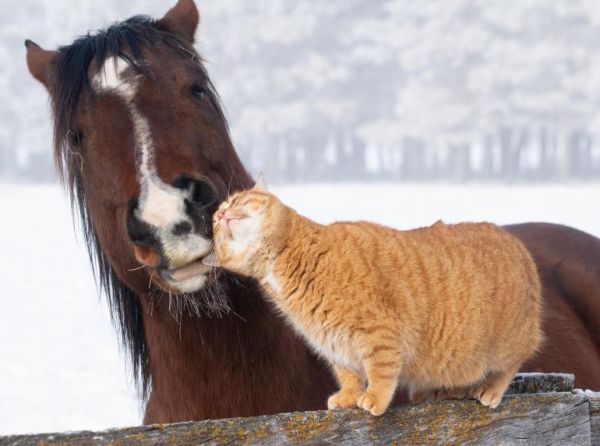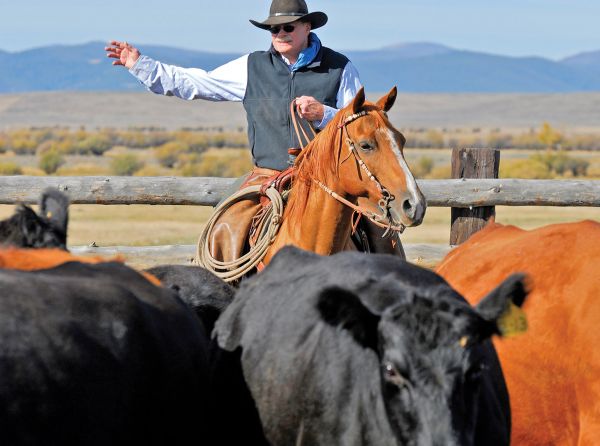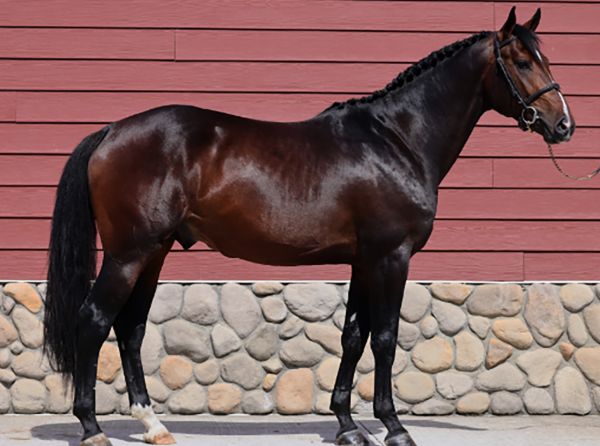By Jonathan Field
Photo: Robin Duncan Photography
One of the first things I teach all of my horses is to move sideways willingly from the ground and while riding. These lateral exercises are beneficial for every discipline as they teach your horse to become flexible through the hindquarters and shoulders, and more balanced and athletic.
Sideways will stretch and strengthen the horse in ways that moving straight will not. It is like yoga for horses!
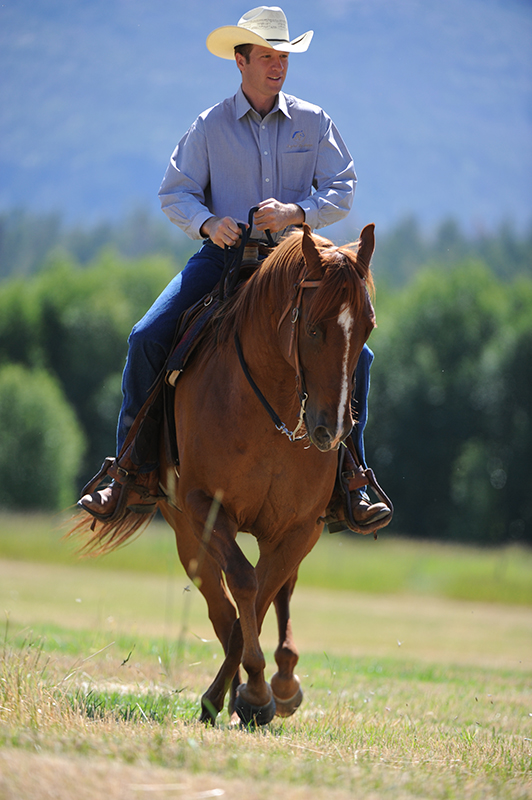
Cowboy Dressage: Jonathan and his horse, Hal, perform the half pass at the trot. Sideways teaches a horse to be flexible, balanced, and athletic.
By teaching your horse to move sideways, you can create a suppleness that will improve your circles, lead departures, and many more exercises. Problems such as locking up, cross-firing, cutting turns, falling to the inside, as well as many more trouble spots, can be solved by teaching your horse to move willingly sideways.
I have found that sideways can help me with horses that are troubled by:
- Flying lead changes
- Rearing
- Impulsiveness
- Hollow backs
- Imbalance in muscle development and coordination
- Popping the hindquarters in a turnaround
- And more…the list is almost endless!
I start these exercises with novice riders and green horses and bring advanced riders back to them when horses become stiff and dull to the leg. The exercises outlined in this article teach the exaggerated movement of sideways and help the horse’s mind think sideways rather than forward. I start these manoeuvers on the ground where the horse has no rider interference.
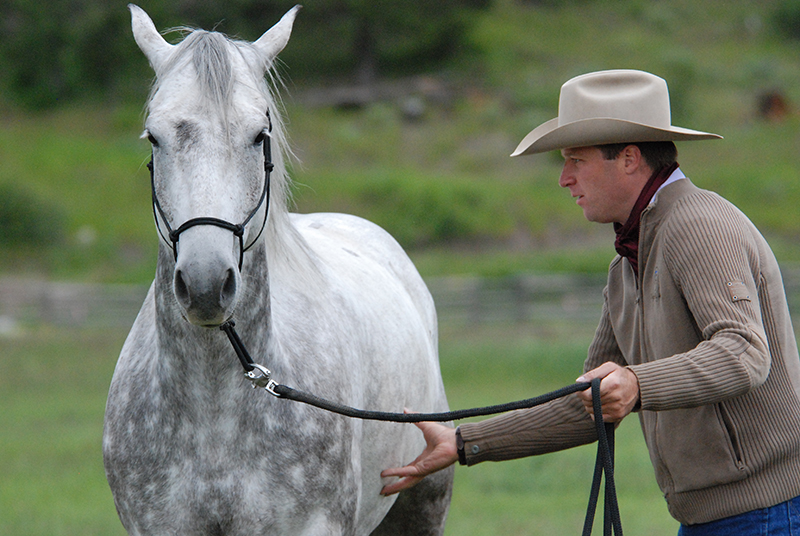
Exercise #1
Sideways by Touching the Ribs
Here you can see I am asking Jack to step over sideways by the touching pressure of my hand on his ribs. I place my hand in the same area that I will later ask with my leg. I have a clear intent in my body for Jack to move as I incrementally increase the touching pressure of my hand. When he moves, I release the pressure and give him a rub.
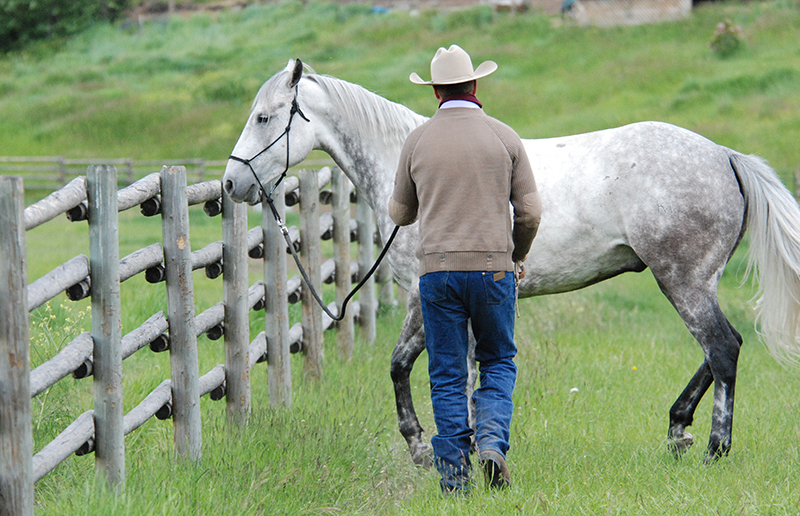
Exercise #2
Using a Fence
A fence will help in teaching your horse to move sideways as it creates a clear boundary to stop any forward movement. Start by having your horse face the fence and then ask him or her to step over sideways until you can move ten feet down the fence line with ease.
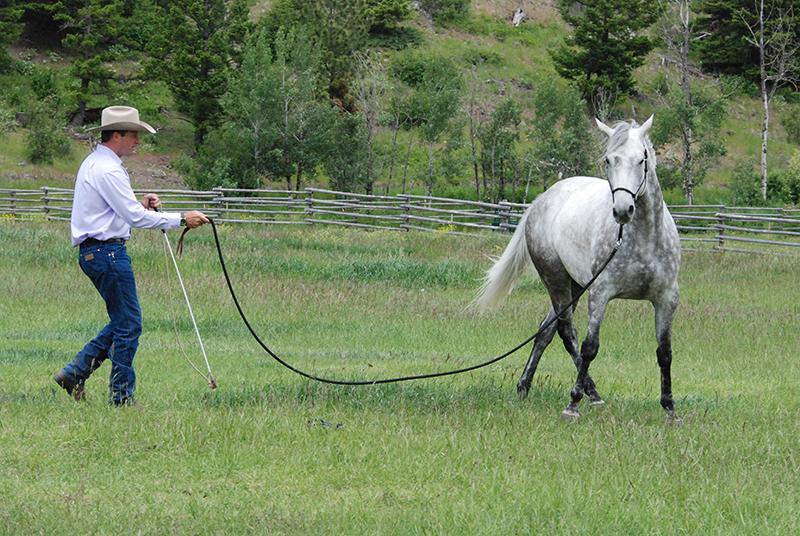
Exercise #3
Out in the Open
Once you are getting some nice sideways along the fence, the next step is to build it out in the open. Once you can do this, you have taught your horse that pressure from the side does not always mean move forward. This is so important, because the horse is a flight animal and resorts to forward under pressure. Create some distance between yourself and your horse as you use a driving pressure at his ribs. You might have to shake your rope to stop him from moving forward. Ultimately you want to be able to have him flow sideways with your rope still. Sometimes I will draw a line on the ground with chalk powder so that I can clearly see where I want the horse to go.
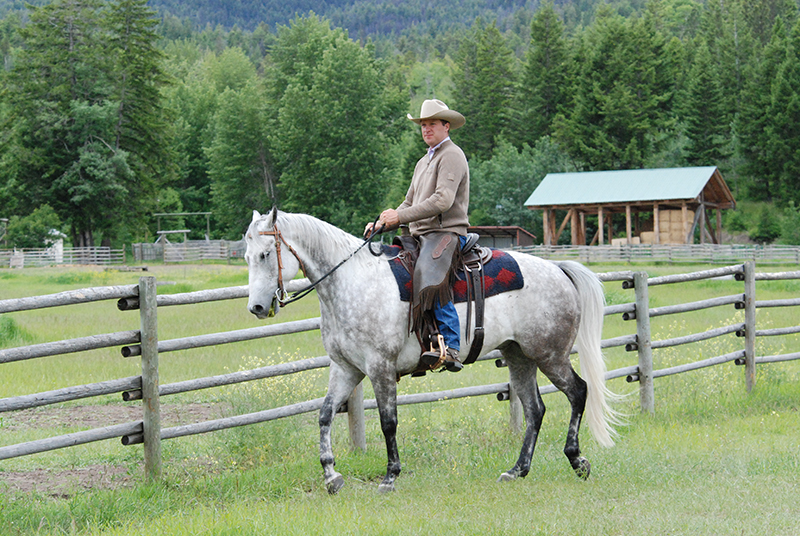
Exercise #4
Riding Sideways Along the Fence
When I transition these movements from the ground to the saddle, I go back to the fence. At a brisk walk or slow trot, I ask the horse to yield the hindquarters 45 degrees off the fence. In this photo, I am asking Jack, using my right leg and rein, to move over sideways as I open my left leg and rein. I’ll move about ten feet down the fence, release my aids, and carry on along the rail for another 100 feet, and then repeat it. I found that doing it like this helps the horse to stay free, because he is thinking about going forward along the rail. I also do this exercise out on the trail.
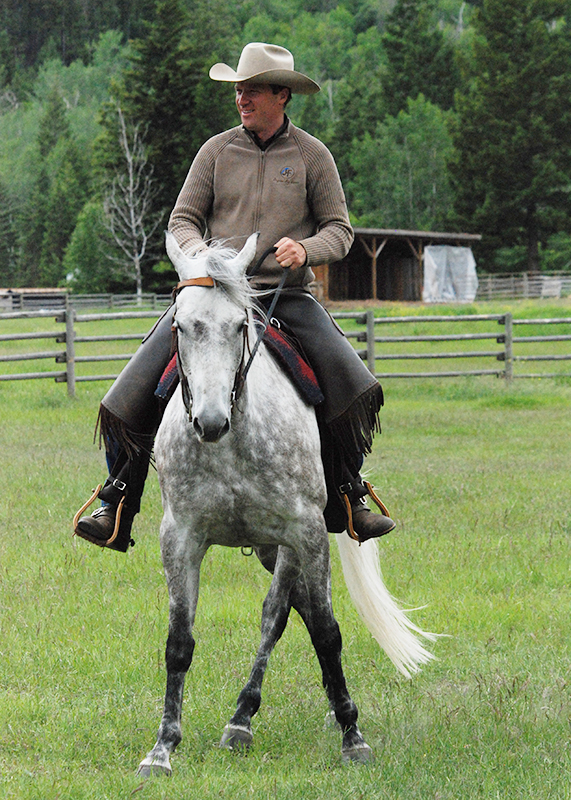
Exercise #5
Straight Sideways Without the Fence
Now I ask my horse to move sideways without the fence as a barrier to see how much forward flight is still in my horse’s mind. I repeat it each way until he does it without trying to move forward.
As I ask Jack to move sideways to his right, you can see that I have shifted my weight slightly to the left as well as opening my right leg and rein. By applying my left leg and rein aid and shifting off the right side, I open a door for him to move towards. If
I want his feet to move freely in one direction, I need to get slightly off them.
I do this for a few steps and release, then a few more steps, release, and stop. Keep going in the same direction until it gets solid before going the other way. Sometimes this will take several sessions to get it working well.
Exercise #6
Fun with Sideways
Just for fun and variety, try sideways:
- Up and down a hill
- To a gate
- Over an obstacle
- Down the trail
One of my favorite examples of getting creative with sideways was when I saw a friend ask his horse sideways 20 feet along a big log on the ground, keeping his hind feet on the ground and his front feet on the log the whole time. I was blown away! Talk about strength and coordination!
Sideways and Quincy
Lateral exercises can help unlock a horse to get him moving forward freely. Here is an example of how sideways helped my horse Quincy.
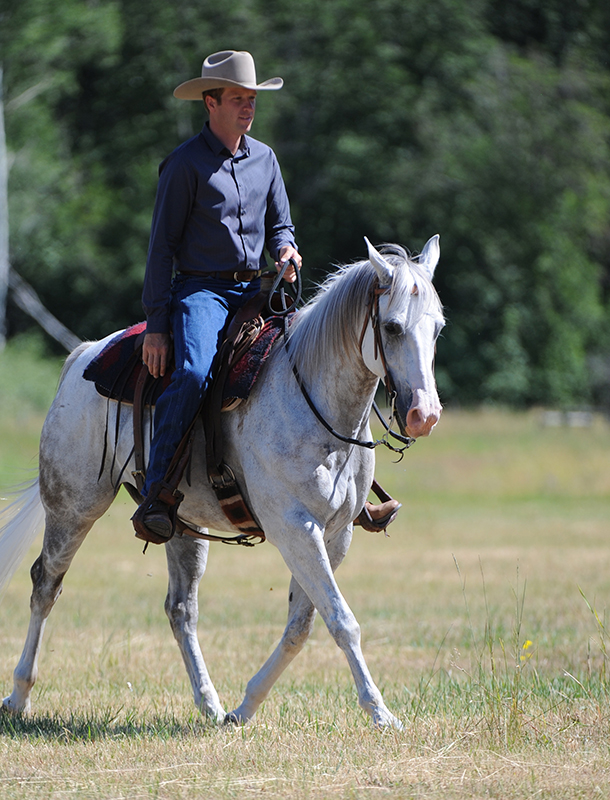
Trot half pass with Quincy. Photo: Robin Duncan Photography

Extended trot with Quincy. Photo: Robin Duncan Photography
When I first got Quincy, he was very balled up and over-flexed, and one of his main reactions when he got worried (which was often!) was to rear. I wanted to teach him to get moving forward and unlock his body. I used all the exercises discussed in this article to really help him unlock that gristly strong body that was working against his previous riders. Even today, I use lateral exercises like the half pass, as pictured here, to free him up before asking him for the extended trot.
To read more articles by Jonathan Field on this site, click here.
All photos by Liz Duncan, unless otherwise specified.




